
The Enchanting Capital of São Tomé City
Explore the hidden charms of São Tomé City, where colonial history meets tropical beauty, offering a unique travel experience in the heart of the Gulf of Guinea.
São Tomé City, the capital of São Tomé and Príncipe, is a hidden gem nestled in the Gulf of Guinea. With its colonial architecture, lush landscapes, and vibrant culture, this city offers a unique blend of history and natural beauty. The city is filled with colorful buildings, bustling markets, and friendly locals who welcome visitors with open arms. Stroll through the narrow streets and discover the rich history of São Tomé City, from its Portuguese colonial past to its independence in 1975. The city is home to several historic landmarks, such as the São Sebastião Museum, which provides a fascinating insight into the island's past. Don't miss the beautiful Cathedral of Nossa Senhora da Graça, a testament to the city's religious heritage. Nature lovers will be captivated by the city's stunning surroundings. Just a short drive from the city center, you'll find Obo National Park, a lush rainforest teeming with exotic wildlife and breathtaking waterfalls. For a tranquil escape, head to the pristine beaches along the coast, where you can relax and soak up the sun. São Tomé City is also known for its delicious cuisine, with fresh seafood and tropical fruits that will tantalize your taste buds.
Local tips in Sao Tome City
- Visit the local markets early in the morning to experience the vibrant atmosphere and get the freshest produce.
- Hire a local guide for a tour of the city's historic sites to gain deeper insights into São Tomé's rich history.
- Try the local dish 'calulu' – a delicious fish stew made with palm oil and vegetables.
- Bring comfortable walking shoes as the city's cobblestone streets can be uneven.
- Don't forget to pack insect repellent, especially if you plan to explore the rainforests.
The Enchanting Capital of São Tomé City
São Tomé City, the capital of São Tomé and Príncipe, is a hidden gem nestled in the Gulf of Guinea. With its colonial architecture, lush landscapes, and vibrant culture, this city offers a unique blend of history and natural beauty. The city is filled with colorful buildings, bustling markets, and friendly locals who welcome visitors with open arms. Stroll through the narrow streets and discover the rich history of São Tomé City, from its Portuguese colonial past to its independence in 1975. The city is home to several historic landmarks, such as the São Sebastião Museum, which provides a fascinating insight into the island's past. Don't miss the beautiful Cathedral of Nossa Senhora da Graça, a testament to the city's religious heritage. Nature lovers will be captivated by the city's stunning surroundings. Just a short drive from the city center, you'll find Obo National Park, a lush rainforest teeming with exotic wildlife and breathtaking waterfalls. For a tranquil escape, head to the pristine beaches along the coast, where you can relax and soak up the sun. São Tomé City is also known for its delicious cuisine, with fresh seafood and tropical fruits that will tantalize your taste buds.
When is the best time to go to Sao Tome City?
Iconic landmarks you can’t miss
Papa-Figo
Experience the rich culinary heritage of São Tomé at Papa-Figo, where local flavors and vibrant atmosphere come together for an unforgettable meal.
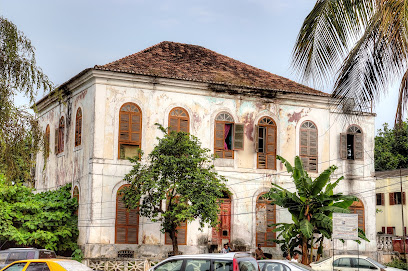
Praia Inhame Eco Lodge
Discover tranquility and adventure at Praia Inhame Eco Lodge, a sustainable retreat in the heart of Sao Tome and Principe's natural beauty.

Omali São Tomé
Discover the luxurious Omali São Tomé, an idyllic hotel on Praia do Lagarto offering stunning views, exquisite dining, and unparalleled relaxation in São Tomé and Príncipe.
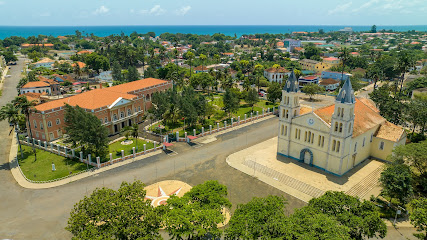
Saint Nicholas Waterfall
Explore the enchanting Saint Nicholas Waterfall in Monte Café, a serene getaway perfect for nature lovers and adventure seekers alike.
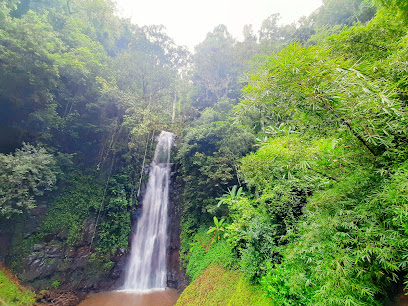
Equator Landmark
Stand on the equator at the stunning Equator Landmark in Porto Alegre, a historical site blending culture, geography, and breathtaking scenery.
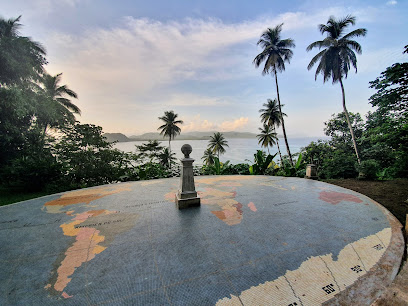
Sao Tome Island
Explore the untouched beauty of São Tomé Island, a tropical paradise with lush rainforests, pristine beaches, and vibrant culture waiting to be discovered.
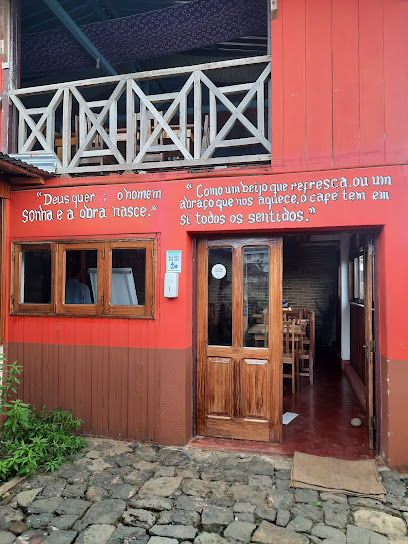
Jardim Botânico do Bom Sucesso
Explore the tranquil beauty of Jardim Botânico do Bom Sucesso, a lush botanical garden in Milagrosa, perfect for nature lovers and serene escapes.
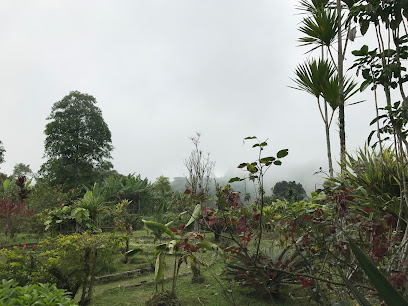
Claudio Corallo - Cacao & Caffe São Tomé e Príncipe
Explore the rich flavors of São Tomé at Claudio Corallo, an artisan chocolate haven offering exquisite chocolates and rich local coffee.
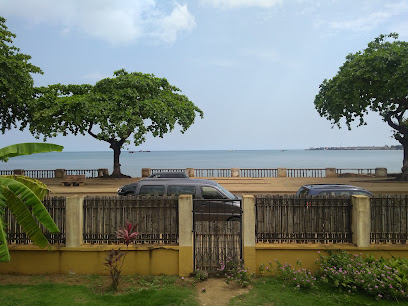
Praia das Sete Ondas
Explore the breathtaking Praia das Sete Ondas, a serene beach in São Tomé and Príncipe, perfect for relaxation, adventure, and stunning sunsets.
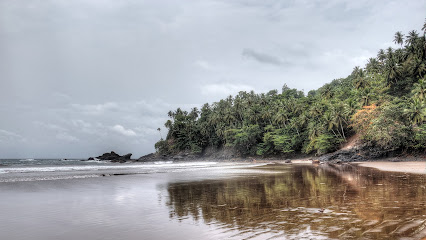
São Sebastião Museum
Discover the captivating heritage of São Tomé at the São Sebastião Museum, a treasure trove of history, art, and culture.
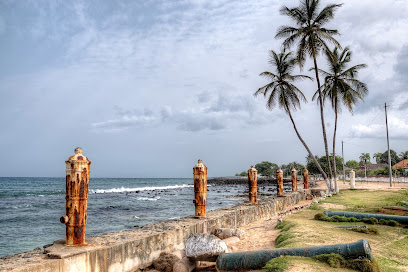
Monte Mar Restaurante São Tomé
Experience the exquisite flavors of São Tomé at Monte Mar Restaurante, a culinary paradise with breathtaking ocean views and fresh seafood delights.
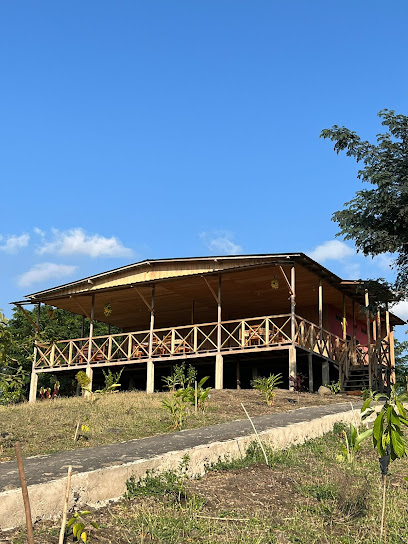
90 Graus Esplanada Bar
Experience the best of São Tomé's culinary delights at 90 Graus Esplanada Bar, specializing in delicious pizzas and a lively atmosphere.
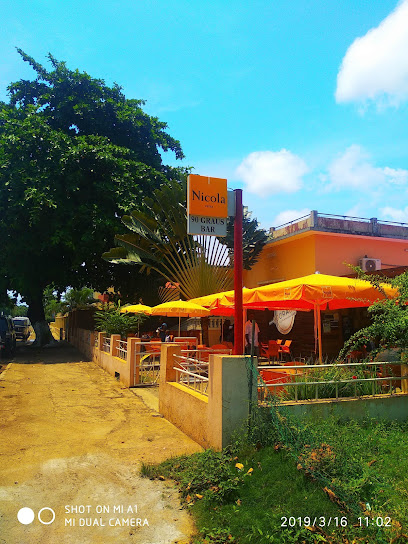
Lagoa Azul
Experience the tranquil beauty of Lagoa Azul, a paradise beach with azure waters, perfect for relaxation, snorkeling, and unforgettable sunsets.
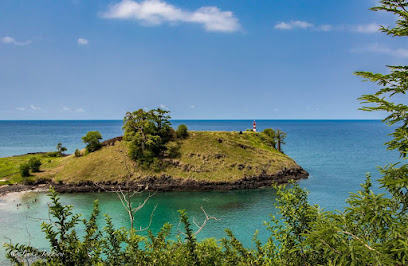
Aeroporto Internacional de São Tomé e Príncipe
Discover the enchanting Aeroporto Internacional de São Tomé e Príncipe, your gateway to the lush landscapes and vibrant culture of this tropical paradise.
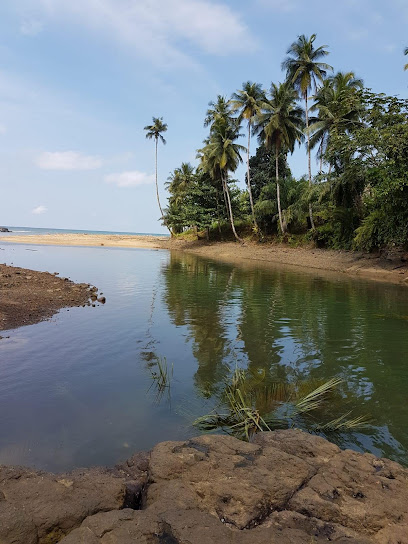
Praia Piscina
Discover the enchanting Praia Piscina, a tropical beach paradise with golden sands, crystal-clear waters, and vibrant marine life, perfect for relaxation and adventure.

Unmissable attractions to see
Saint Nicholas Waterfall
Explore the breathtaking Saint Nicholas Waterfall in Monte Café, a serene escape into nature's beauty, perfect for adventure and relaxation.

Saint Nicholas Waterfall
Discover the serene beauty of Saint Nicholas Waterfall in Monte Café, a must-visit natural attraction for tourists seeking tranquility and stunning views.
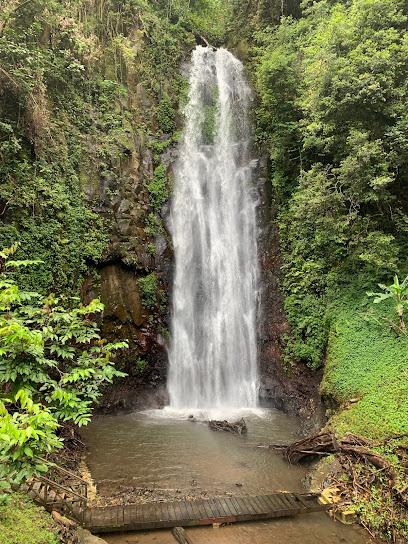
Hellmouth
Discover the stunning landscapes and adventurous spirit of Hellmouth in Ribeira Afonso, a must-visit destination for nature lovers and thrill-seekers.
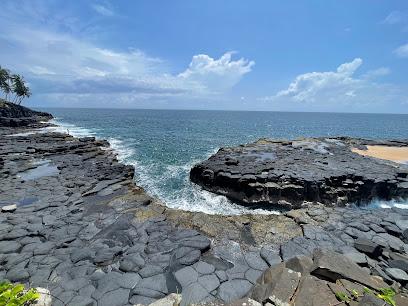
Museu Do Cafe
Discover the rich heritage of coffee at Museu Do Cafe in Monte Café, São Tomé - a must-visit for coffee lovers and curious travelers alike.
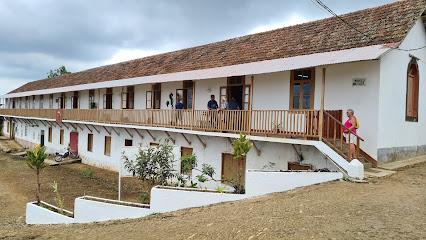
Jardim Botânico do Bom Sucesso
Discover the lush landscapes and diverse plant life at Jardim Botânico do Bom Sucesso in Milagrosa, a serene retreat for nature lovers and explorers alike.

São Sebastião Museum
Explore the captivating history and culture of São Tomé at the São Sebastião Museum, a must-visit national treasure for all tourists.
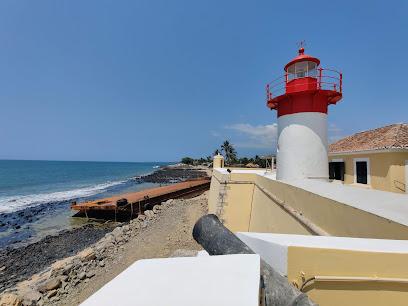
Rolas Island
Discover the serene beauty of Rolas Island, where pristine beaches and lush landscapes create the ultimate tropical getaway in São Tomé and Príncipe.
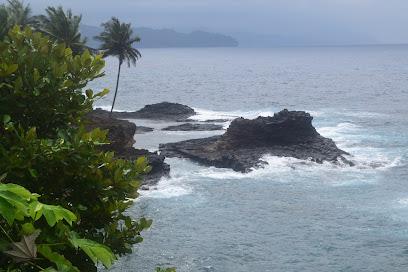
Praia das Sete Ondas
Experience the breathtaking beauty of Praia das Sete Ondas, a tropical paradise in São Tomé with golden sands and crystal-clear waters perfect for relaxation.
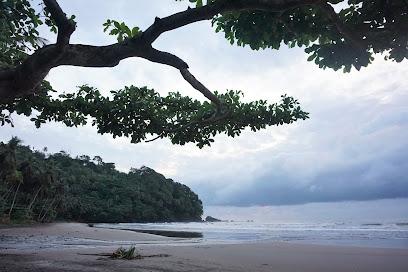
Praia Piscina
Discover the enchanting Praia Piscina, a tropical paradise with idyllic sands and crystal-clear waters, perfect for relaxation and adventure in São Tomé.
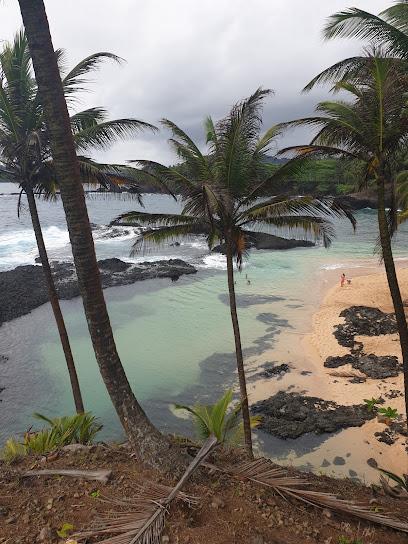
Roça Água-Izé
Discover the rich heritage of São Tomé at Roça Água-Izé, an open-air museum celebrating the island's cocoa plantation history and cultural richness.
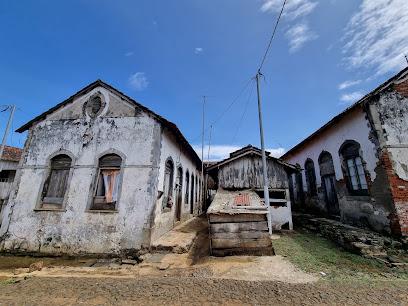
Praia Micondo
Experience the untouched beauty of Praia Micondo, a serene beach paradise in São Tomé and Príncipe, perfect for relaxation and adventure.
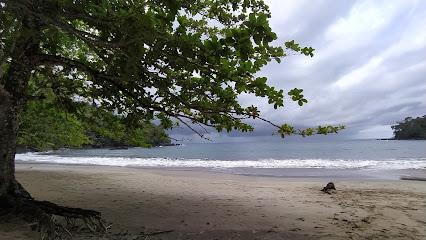
Cascata de Praia Pesqueira
Explore the stunning Cascata de Praia Pesqueira, a tranquil waterfall paradise in São Tomé e Príncipe, perfect for nature lovers and photography enthusiasts.

Obo National Park
Discover the breathtaking landscapes and rich biodiversity of Obo National Park in Monte Carmo, a haven for nature lovers and adventure seekers.
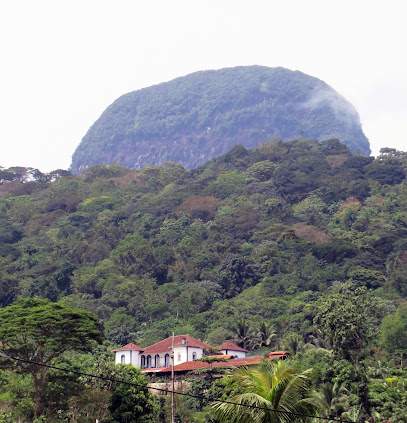
Praia Jale
Discover the pristine sands and turquoise waters of Praia Jale, a beach paradise perfect for relaxation and adventure in São Tomé.
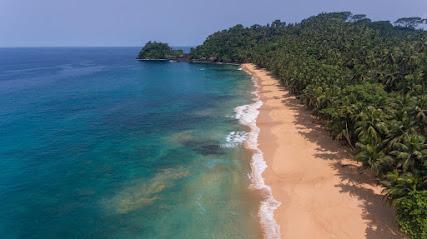
Praia Grande
Discover the breathtaking beauty of Praia Grande, a serene beach destination in São Tomé offering relaxation, adventure, and vibrant local culture.
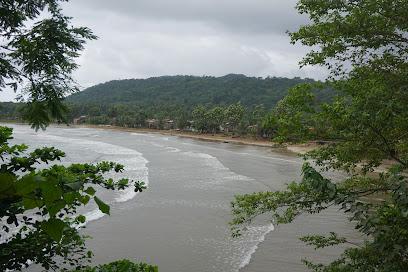
Essential places to dine
Papa-Figo
Discover authentic São Toméan cuisine at Papa-Figo – where every dish tells a story of flavor and tradition.

O Pirata
Discover the flavors of São Tomé at O Pirata - where culinary excellence meets island charm.

Dona Teté
Discover authentic Creole flavors at Dona Teté in São Tomé – where every dish tells a story!
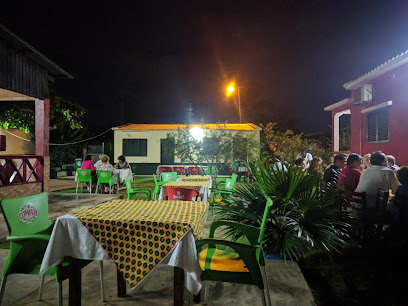
90 Graus Esplanada Bar
Experience mouthwatering pizzas and local flavors at 90 Graus Esplanada Bar in São Tomé e Príncipe.

Xico's Café
Experience authentic local flavors at Xico's Café in São Tomé – where culinary tradition meets vibrant culture.
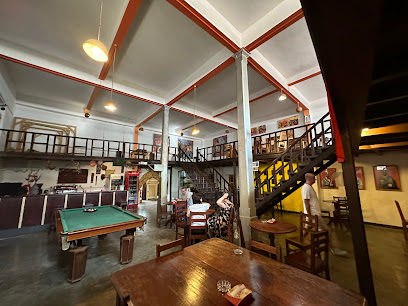
Filomar
Savor authentic Creole cuisine at Filomar, where fresh local ingredients meet unique flavors in a vibrant atmosphere.
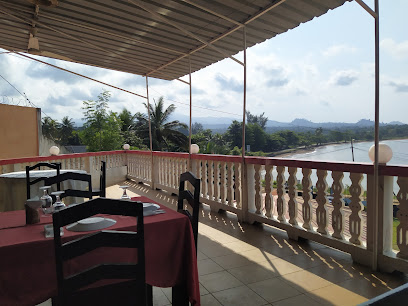
CARAMBOLA
Discover the flavors of São Tomé at Carambola, where traditional cuisine meets modern flair in a vibrant dining atmosphere.
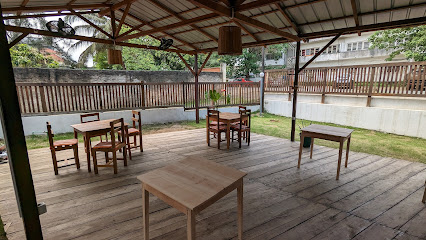
Zima restaurante Bar
Discover exquisite flavors at Zima Restaurante Bar in São Tomé - where local cuisine meets vibrant nightlife.
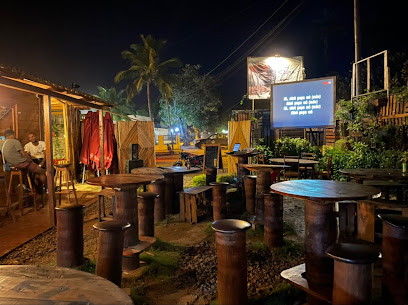
Xquizeat
Experience authentic São Toméan flavors at Xquizeat - a culinary gem offering local delicacies in a vibrant setting.
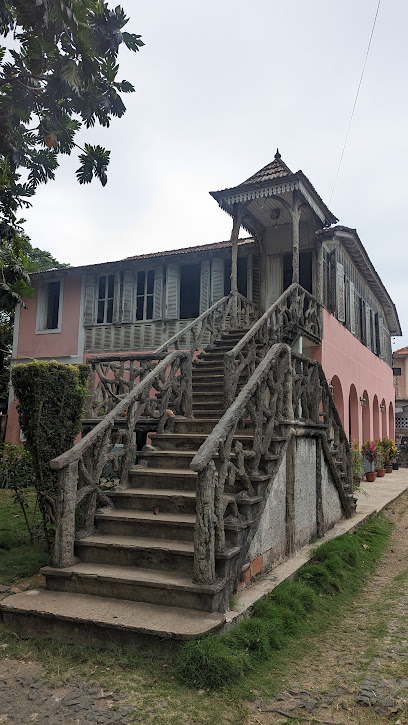
Onda Azul
Experience the vibrant flavors of São Tomé at Onda Azul, where local cuisine meets stunning island views.
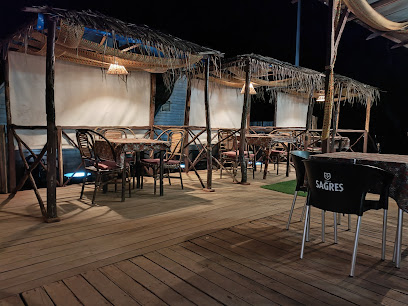
Passante
Experience authentic São Toméan cuisine at Passante - where every meal tells a story of flavor and culture.
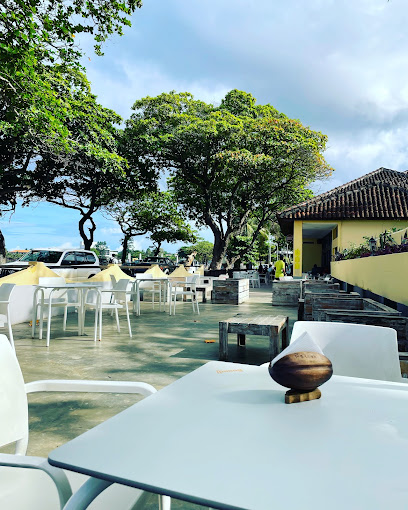
B24 Restaurant
Discover authentic São Toméan cuisine at B24 Restaurant, where every dish tells a story of local culture and flavor.
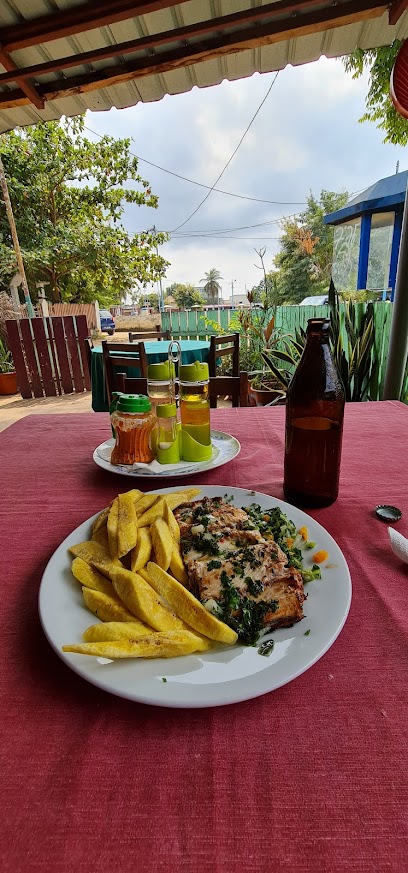
Tia Nanda
Discover authentic local cuisine at Tia Nanda in São Tomé - a culinary delight that embodies the flavors and culture of this beautiful island.
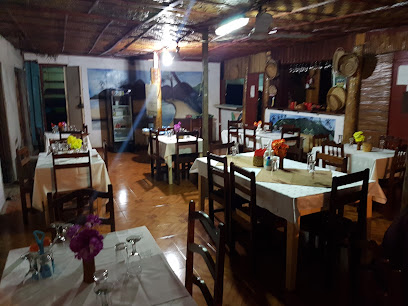
Restaurante Atlântico
Discover the flavors of São Tomé at Restaurante Atlântico - where fresh seafood meets island-inspired cuisine.
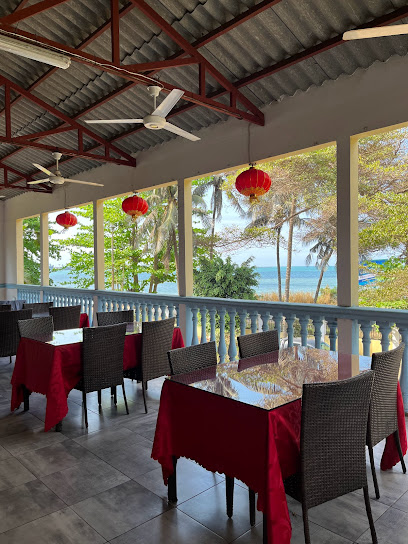
Dom Duarte
Experience authentic São Toméan cuisine at Dom Duarte - where every dish tells a story of culture and flavor.
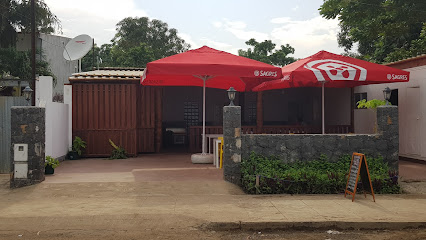
Markets, malls and hidden boutiques
Kuá Tela
Discover unique handcrafted souvenirs and local delights at Kuá Tela, the charming boutique in São Tomé that celebrates artisan culture.
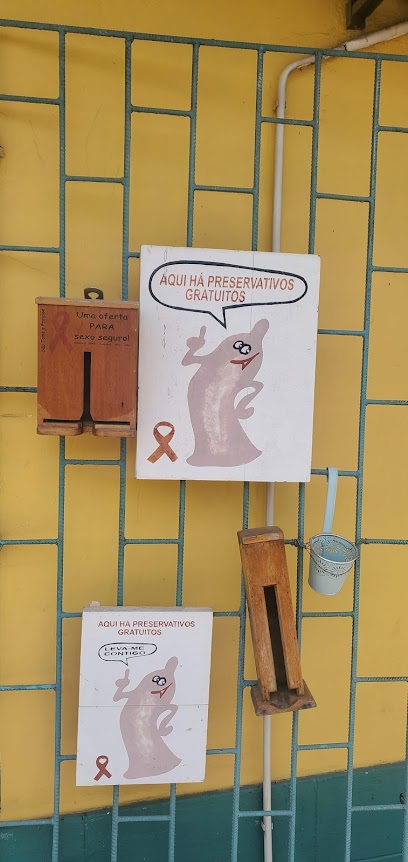
Ossobo Ecosocial
Experience the vibrant shopping and dining scene at Ossobo Ecosocial in São Tomé, where local culture meets modern retail.
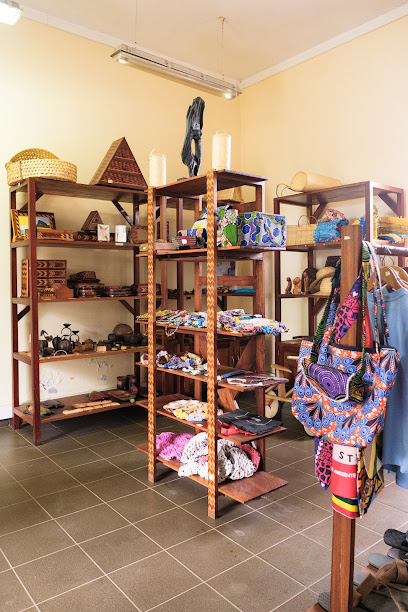
Mercado Côco-côco
Explore Mercado Côco-côco in São Tomé for an authentic experience of local flavors, crafts, and cultural vibrancy.
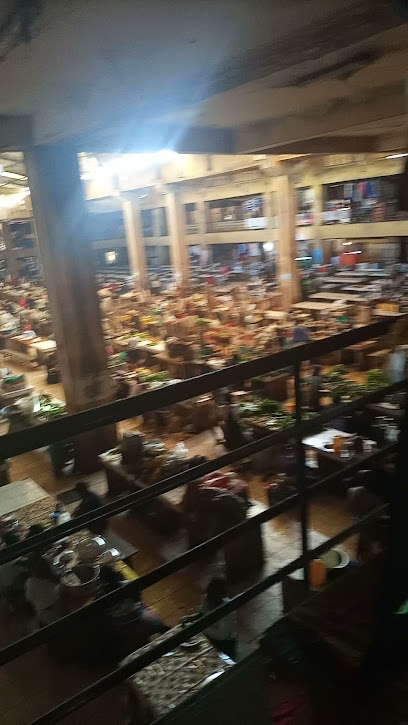
Mini Mercado Bom Preço
Experience the local flavors of São Tomé at Mini Mercado Bom Preço, your go-to grocery store for fresh produce and unique snacks.

IMPANTA
Discover unique home goods and authentic souvenirs at Impanta in São Tomé, where local craftsmanship meets modern design.
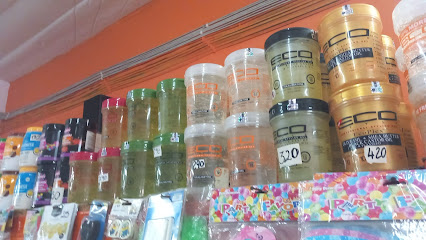
Great World Yeng Cheng
Experience the vibrant flavors of China at Great World Yeng Cheng, a must-visit Chinese supermarket in São Tomé, where culinary adventures await.
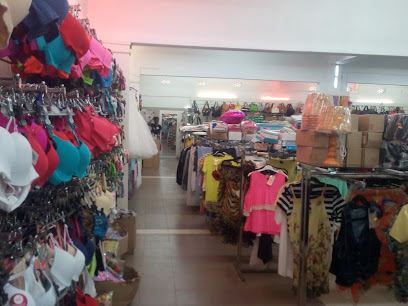
CYBER Computer
Discover Cyber Computer, São Tomé's premier shopping mall for electronics and local treasures, blending modernity with cultural charm.
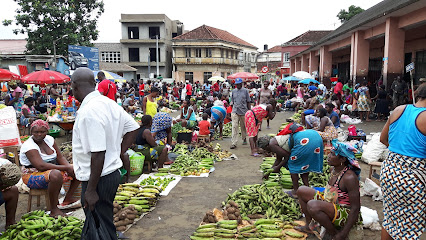
+doce lda
Explore the organic flavors of São Tomé at +doce lda, an organic food store offering fresh produce, artisanal goods, and local specialties.

AUTENTIKA
Experience the authentic charm of São Tomé at Autentika, where local craftsmanship meets unique shopping adventures.
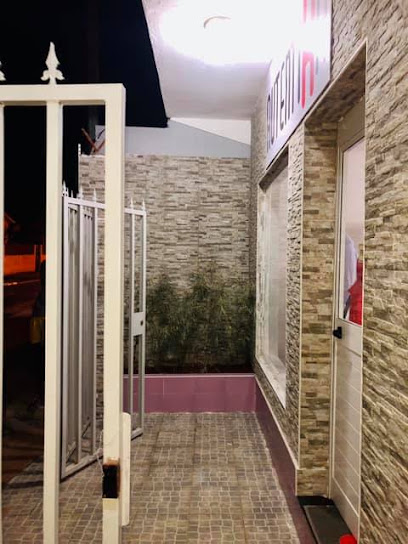
Jorge Vacas
Discover the vibrant fashion scene at Jorge Vacas, São Tomé's premier clothing store, blending local craftsmanship with contemporary style.
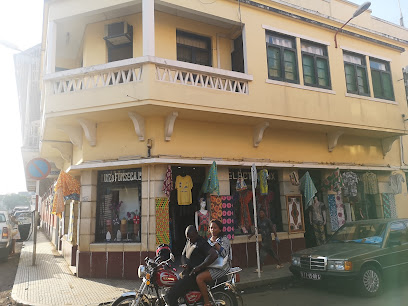
Mama África
Explore the vibrant essence of African culture at Mama África in São Tomé, where unique handcrafted goods await every traveler.

Ayala moda & casa
Explore the vibrant fashion scene at Ayala Moda & Casa, São Tomé's premier clothing store offering unique styles and local flair.

IMPANTAXI
Explore unique home goods at IMPANTAXI in São Tomé, offering an exquisite selection of local crafts and essentials that capture the island's vibrant culture.
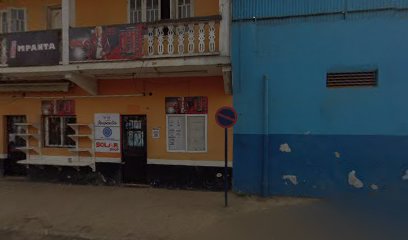
Dona Berta
Explore the vibrant fashion scene of São Tomé at Dona Berta, where local culture meets unique style in a delightful shopping experience.
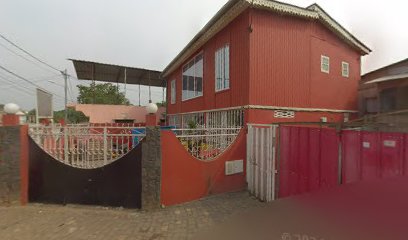
Ayala Moda
Shop at Ayala Moda in São Tomé for stylish clothing and accessories that reflect the island's vibrant culture and fashion.
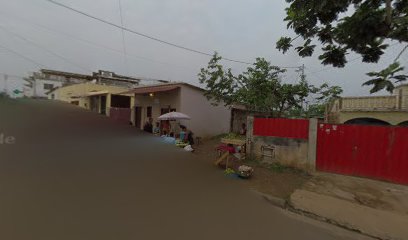
Essential bars & hidden hideouts
Papa-Figo
Experience the vibrant flavors of São Tomé at Papa-Figo, where local cuisine meets international delights in a warm and welcoming atmosphere.
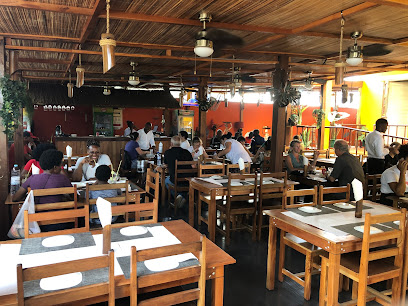
O Pirata
Discover O Pirata in São Tomé for a delightful fusion of local flavors and international cuisine, perfect for every palate.
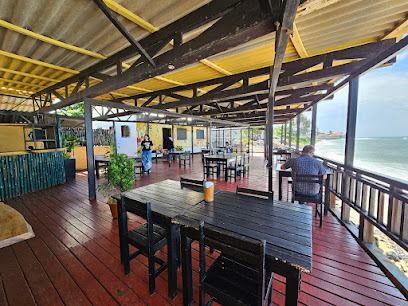
Pico Mocambo
Discover the vibrant atmosphere of Pico Mocambo, a bar in São Tomé offering refreshing drinks, local culture, and tropical vibes.
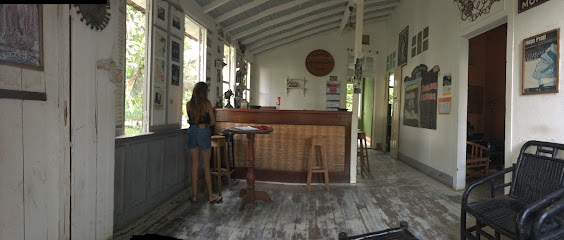
90 Graus Esplanada Bar
Discover the vibrant taste of São Tomé at 90 Graus Esplanada Bar, where delicious pizzas meet a lively atmosphere for a perfect dining experience.
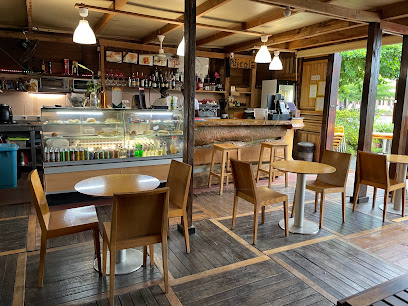
Xico's Café
Experience the vibrant flavors of São Tomé at Xico's Café, a beloved spot for locals and travelers alike, offering delicious dishes and a cozy atmosphere.
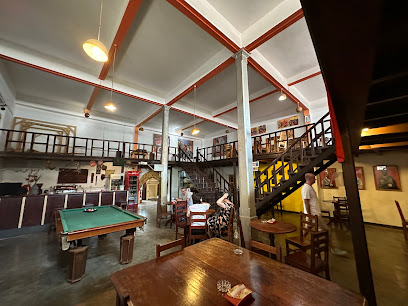
Restaurante Bar| ZIMA
Discover the vibrant flavors and lively ambiance at Restaurante Bar| ZIMA in São Tomé, where local cuisine meets dynamic cocktails.
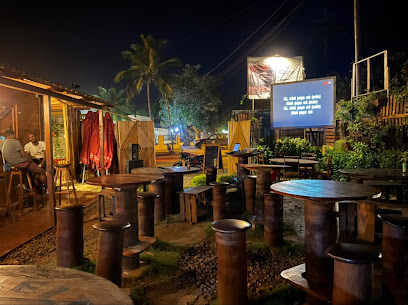
Zima restaurante Bar
Discover the flavors of São Tomé at Zima Restaurante Bar, where exquisite cuisine meets vibrant nightlife in a tropical oasis.
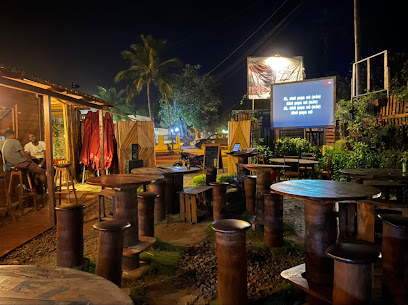
Xquizeat
Experience the authentic flavors of São Tomé at Xquizeat, where fresh ingredients meet traditional culinary artistry in a vibrant setting.
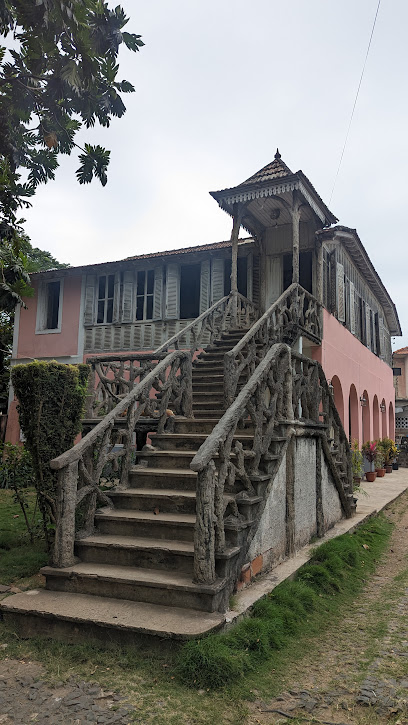
BBC/Abaya da Bôo
Discover the vibrant nightlife at BBC/Abaya da Bôo in São Tomé, where local flavors and a lively atmosphere come together for an unforgettable experience.
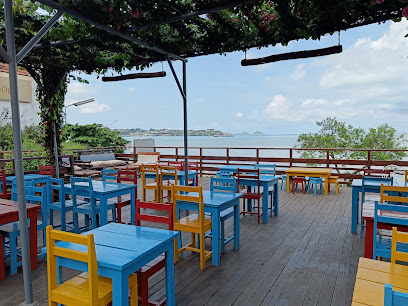
Discoteca Beach Club
Discover the rhythm of São Tomé at Discoteca Beach Club, where unforgettable nights and vibrant energy create lasting memories.
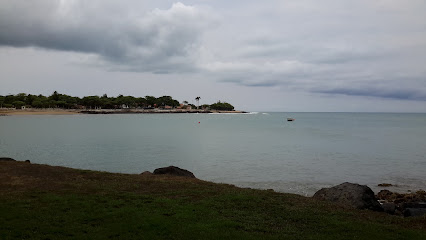
Dom Duarte
Discover the flavors of São Tomé e Príncipe at Dom Duarte, where local culinary traditions meet modern dining in a vibrant atmosphere.
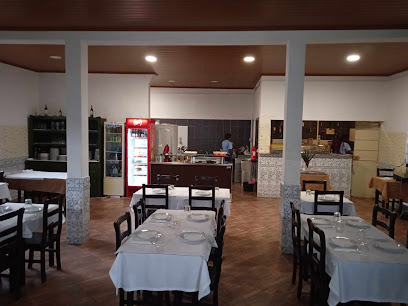
Tentadora
Discover the flavors of São Tomé at Tentadora, where local dishes meet warm island hospitality in a vibrant setting.
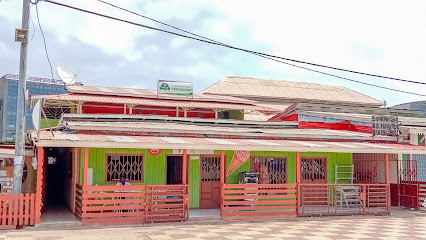
Fundador
Experience the vibrant nightlife at Fundador, a lively bar in São Tomé offering local drinks, live music, and a warm atmosphere for all visitors.
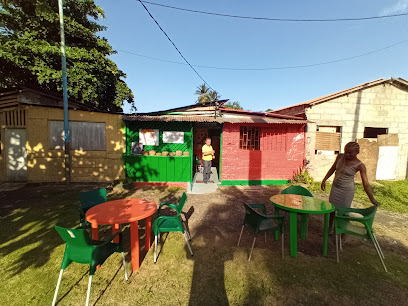
Caipirinha Tropical
Discover the vibrant flavors of São Tomé at Caipirinha Tropical, a cocktail bar offering an unforgettable tropical experience.
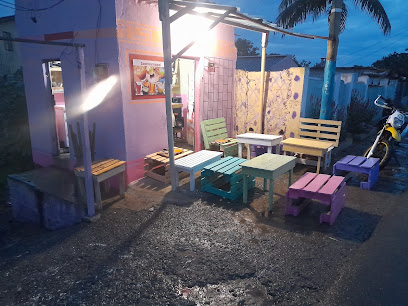
Bala-Bala bar @Praia Lagarto
Experience the vibrant flavors of São Tomé at Bala-Bala Bar, a grill paradise by Praia Lagarto offering fresh seafood and local dishes.
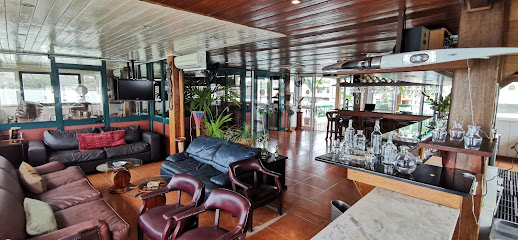
Local Phrases
-
- HelloOlá
[oh-lah] - GoodbyeAdeus
[ah-deh-oos] - YesSim
[seem] - NoNão
[now] - Please/You're welcomePor favor
[poor fah-vohr] - Thank youObrigado
[oh-bree-gah-doh] - Excuse me/SorryCom licença
[kohm lee-sen-sah] - How are you?Como está?
[koh-moh ehs-tah] - Fine. And you?Bem. E você?
[behm. eh voh-seh] - Do you speak English?Fala inglês?
[fah-lah een-glehz] - I don't understandNão entendo
[now ehn-tehn-doh]
- HelloOlá
-
- I'd like to see the menu, pleaseGostaria de ver o menu, por favor
[goh-stah-ree-ah deh vehr oh meh-noo, poor fah-vohr] - I don't eat meatNão como carne
[now koh-moh kahr-neh] - Cheers!Saúde!
[sow-deh] - I would like to pay, pleaseGostaria de pagar, por favor
[goh-stah-ree-ah deh pah-gahr, poor fah-vohr]
- I'd like to see the menu, pleaseGostaria de ver o menu, por favor
-
- Help!Ajuda!
[ah-zoo-dah] - Go away!Vai embora!
[vah-ee ehm-boh-rah] - Call the Police!Chama a Polícia!
[shah-mah ah poh-lee-see-ah] - Call a doctor!Chama um médico!
[shah-mah oom meh-dee-koh] - I'm lostEstou perdido
[eh-stoh pehr-dee-doh] - I'm illEstou doente
[eh-stoh doh-ehn-teh]
- Help!Ajuda!
-
- I'd like to buy...Gostaria de comprar...
[goh-stah-ree-ah deh kohm-prahr] - I'm just lookingEstou só a ver
[eh-stoh soh ah vehr] - How much is it?Quanto custa?
[kwahn-toh koos-tah] - That's too expensiveIsso é muito caro
[ee-soh eh mwee-toh kah-roo] - Can you lower the price?Pode baixar o preço?
[poh-deh by-shahr o preh-soh]
- I'd like to buy...Gostaria de comprar...
-
- What time is it?Que horas são?
[keh oh-rahz sow] - It's one o'clockÉ uma hora
[eh oo-mah oh-rah] - Half past (10)Meio-dia e meia
[may-oh dee-ah eh may-ah] - MorningManhã
[mah-nyah] - AfternoonTarde
[tahr-deh] - EveningNoite
[noy-teh] - YesterdayOntem
[ohn-tehm] - TodayHoje
[oh-zheh] - TomorrowAmanhã
[ah-mah-nyah] - 1Um
[oom] - 2Dois
[doh-eesh] - 3Três
[trehs] - 4Quatro
[kwah-troh] - 5Cinco
[seen-koh] - 6Seis
[saysh] - 7Sete
[seh-teh] - 8Oito
[oy-toh] - 9Nove
[noh-veh] - 10Dez
[dehz]
- What time is it?Que horas são?
-
- Where's a/the...?Onde está o/a...?
[ohn-deh ehs-tah oo/ah] - What's the address?Qual é o endereço?
[kwahl eh oo ehn-deh-reh-soh] - Can you show me (on the map)?Pode mostrar-me (no mapa)?
[poh-deh moh-strahr-meh (noh mah-pah)] - When's the next (bus)?Quando é o próximo (autocarro)?
[kwahn-doo eh oo proh-kssee-moh (ow-toh-kah-roo)] - A ticket (to ....)Um bilhete (para ....)
[oom beel-yeh-teh (pah-rah)]
- Where's a/the...?Onde está o/a...?
History of Sao Tome City
-
Sao Tome City was founded in 1485 by Portuguese explorers João de Santarém and Pêro Escobar. The island of São Tomé was discovered on December 21, 1471, the feast day of Saint Thomas, which is how the city and island got their names. The location was chosen for its strategic position along the equator and its potential for sugar cane plantations.
-
During the 16th century, Sao Tome became a significant hub for sugar cane production, driven by the labor of enslaved Africans. The island's fertile volcanic soil proved ideal for sugar cane, and plantations flourished. This period marked an economic boom for the city, making it one of the wealthiest regions in the Portuguese Empire.
-
Sao Tome City played a pivotal role in the transatlantic slave trade. Enslaved Africans were brought to the island to work on the plantations, and many were also shipped to other Portuguese colonies. This dark period in the city's history left a lasting impact on its demographic and cultural landscape.
-
In the 19th century, the decline of the sugar industry led to the rise of coffee and cocoa production. Sao Tome became one of the world's largest producers of cocoa, earning it the nickname 'Chocolate Island.' This shift brought renewed prosperity to the city and attracted European settlers and investors.
-
The mid-20th century was marked by the struggle for independence from Portuguese colonial rule. Inspired by other African nations, the people of Sao Tome and Principe sought self-governance. The Movimento de Libertação de São Tomé e Príncipe (MLSTP) was formed, leading to eventual independence on July 12, 1975.
-
Following independence, Sao Tome City faced numerous challenges, including political instability, economic hardships, and social changes. The city underwent various political transformations, striving to establish a stable government and improve living conditions for its residents.
-
In recent years, Sao Tome City has experienced a cultural renaissance. Efforts to preserve and promote the island's rich cultural heritage have led to a resurgence in traditional music, dance, and art. Festivals and cultural events celebrate the city's diverse history and vibrant community.
-
Today, Sao Tome City is a blend of historical charm and modern development. The city has seen improvements in infrastructure, tourism, and education. Efforts to promote sustainable tourism have highlighted Sao Tome's unique natural beauty and historical significance, attracting visitors from around the world.
Sao Tome City Essentials
-
Sao Tome City is accessible mainly by air. The primary entry point is the Sao Tome International Airport (TMS), which receives flights from various international destinations, including Lisbon, Accra, and Luanda. From the airport, the city center is just a short drive away, and taxis are readily available for transport.
-
In Sao Tome City, transportation options include taxis, which are the most convenient mode of travel for tourists. Public minibuses, called 'Hiaces,' are also available and are a cost-effective way to get around, though they can be crowded. Renting a car is another option for those who prefer to explore at their own pace. Walking is feasible within the city center where many attractions are located.
-
The official currency is the Sao Tome and Principe Dobra (STN). Credit cards are accepted in some hotels, restaurants, and larger shops, but cash is still king, especially in smaller establishments. ATMs are available in the city, but it is advisable to carry enough cash for daily expenses. Currency exchange services are also available at the airport and in some banks.
-
Sao Tome City is generally safe, but it is important to exercise standard precautions. Avoid walking alone at night in poorly lit areas and be cautious in crowded places where pickpocketing can occur. Areas near the port and certain neighborhoods on the outskirts of the city have higher crime rates, so it's best to stay vigilant. Always secure your belongings and avoid displaying wealth.
-
In case of emergency, dial 112 for immediate assistance. The city has a hospital and several clinics for medical emergencies. It is recommended to have travel insurance that covers medical emergencies. Pharmacies are available for minor health issues. For police assistance, you can visit the local police station in the city center.
-
Fashion: Do dress modestly, especially when visiting religious sites. Avoid wearing overly revealing clothing. Religion: Do respect local customs and traditions; for example, always ask for permission before taking photos inside churches. Public Transport: Do be patient and polite when using public transport. Don't eat or drink on public transport. Greetings: Do greet people with a handshake and a smile. It's polite to greet everyone when entering a room. Eating & Drinking: Do try local dishes and accept invitations to eat with locals. Don't refuse food or drink as it may be considered impolite.
-
To experience Sao Tome City like a local, visit the local markets like Mercado Municipal to buy fresh produce and traditional crafts. Take a stroll along the beachfront promenade in the evenings, where locals gather to relax. Engage with local fishermen at the port, who are often willing to share stories and insights about their daily lives. Don't miss out on trying local dishes such as 'calulu' and 'grilled fish' at local eateries.
Trending Landmark in Sao Tome City
-
Papa-Figo
-
Praia Inhame Eco Lodge
-
Omali São Tomé
-
Saint Nicholas Waterfall
-
Equator Landmark
-
Sao Tome Island
-
Jardim Botânico do Bom Sucesso
-
Claudio Corallo - Cacao & Caffe São Tomé e Príncipe
-
Praia das Sete Ondas
-
São Sebastião Museum
-
Monte Mar Restaurante São Tomé
-
90 Graus Esplanada Bar
-
Lagoa Azul
-
Aeroporto Internacional de São Tomé e Príncipe
-
Praia Piscina
Nearby Cities to Sao Tome City
-
Things To Do in Trindade
-
Things To Do in Guadalupe
-
Things To Do in Ribeira Afonso
-
Things To Do in Neves
-
Things To Do in Angolares
-
Things To Do in Santa Catarina
-
Things To Do in Santo Antonio
-
Things To Do in Libreville
-
Things To Do in Mbini
-
Things To Do in Luba
-
Things To Do in Lambaréné
-
Things To Do in Malabo
-
Things To Do in Kribi
-
Things To Do in Limbe
-
Things To Do in Port Harcourt










